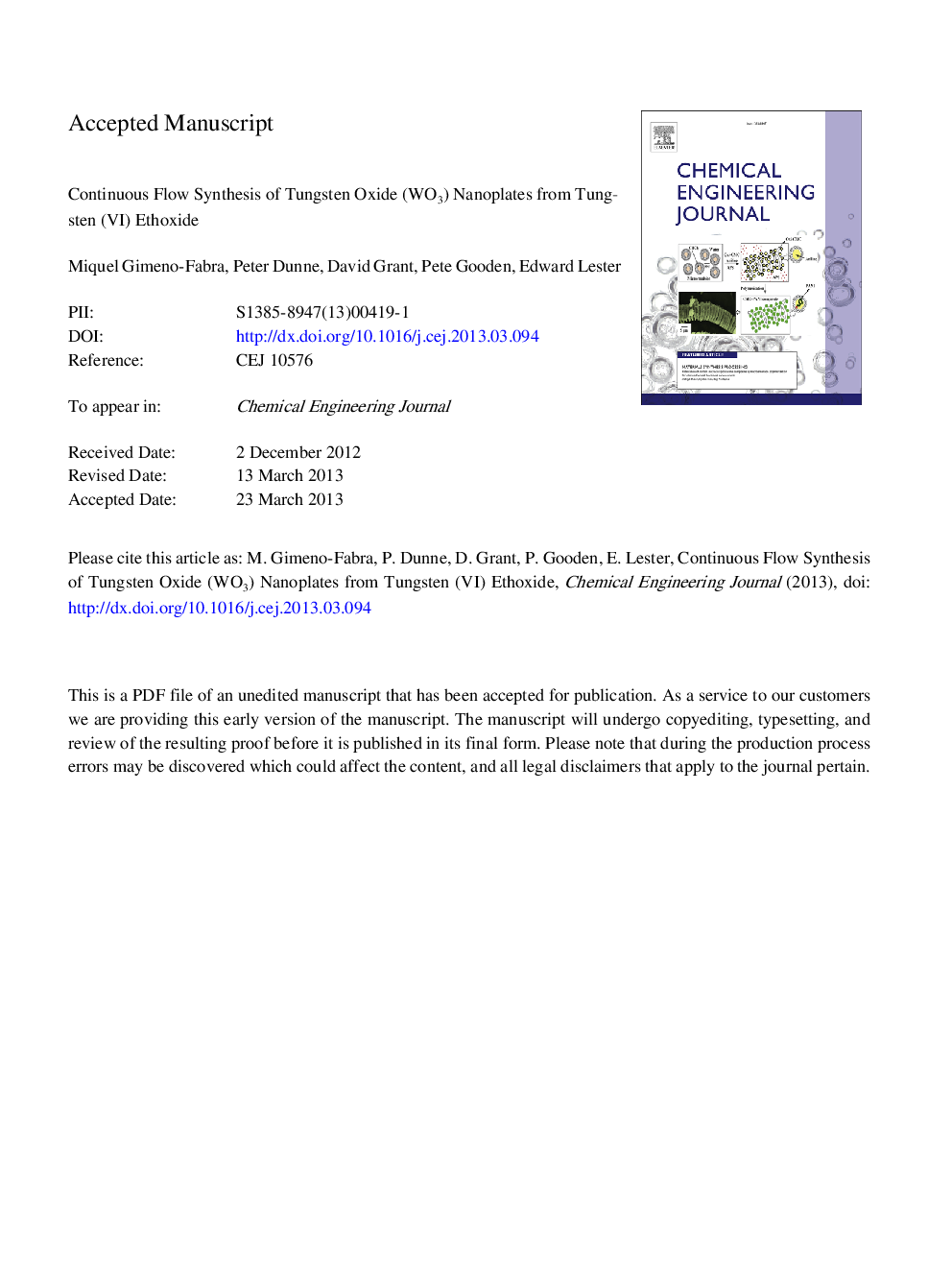| Article ID | Journal | Published Year | Pages | File Type |
|---|---|---|---|---|
| 6587795 | Chemical Engineering Journal | 2013 | 12 Pages |
Abstract
Tungsten oxide (WO3) nanoplates with low reduction temperatures have been successfully synthesised using near- and super-critical water in a continuous flow system (CFS). A pipe in pipe reactor system was used to mix a cold flow of tungsten (VI) ethoxide in ethanol with a superheated flow of water containing 2.5% hydrogen peroxide. The addition of poly(ethylene glycol) (PEG) to the precursor solution was found to partially inhibit 2D growth. The WO3 crystals produced were all within the nanorange with aspect ratios of ca. 2.88, 2.61 and 4.24 depending on the conditions used. The effects of the heated water stream to precursor solution flow ratios as well as reaction temperature were studied. Our synthesis method has the advantage of being a continuous system that can rapidly produce WO3 with the ability to modify the size and shape of the nanoplates by adjusting the reaction conditions. This method has also been proven to be scalable at tonnes per year. The products here presented were characterised using High Resolution Transmission Electron Microscopy (HRTEM), Fourier Transform Infra-Red/Attenuated Total Reflectance Spectroscopy (FTIR/ATR), heated-stage X-ray Diffraction (XRD) with atmosphere control and Thermogravimetric Analysis (TGA) with H2 for reduction purposes.
Related Topics
Physical Sciences and Engineering
Chemical Engineering
Chemical Engineering (General)
Authors
Miquel Gimeno-Fabra, Peter Dunne, David Grant, Pete Gooden, Edward Lester,
